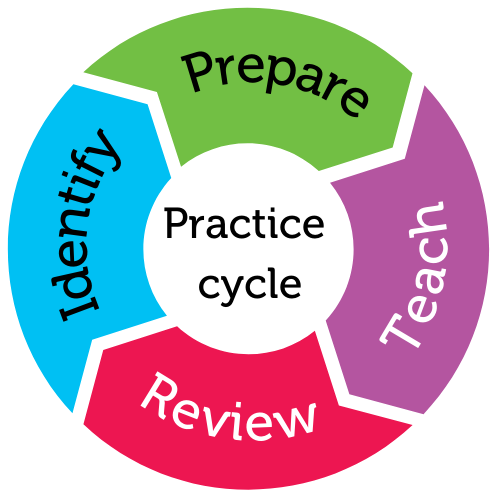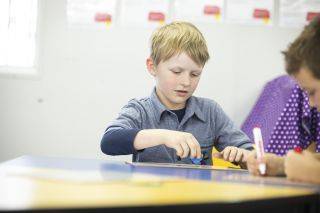
For student year
Helps students to
- interact with peers
- participate in activities
Helps teachers to
- support social skills
Summary
The social aspect of classroom activities, routines, and transitions is dynamic and unpredictable. Students often need to be flexible and respond to social situations quickly. Some students on the autism spectrum may benefit from support to initiate, build, and maintain friendships with their peers.
Preparing to teach
Supporting students
Some students may struggle to understand and fulfil the many social expectations of school. They may also have very different and varied ways of coping.
All of these factors can make it hard to fit in and make friends.
One way to support students is by embedding…
- systematic instruction
- provision of multiple practice opportunities
…in the play and social skills to initiate, build and maintain friendships with peers.
Plan to support social skills
Social skills training (SST) is an established and effective practice that helps students on the autism spectrum acquire and practice effective…
- communication
- play
- social and interaction skills
- friendship skills
…and promote positive interactions with peers.
Which social skills do I target and teach?
Speak with colleagues including specialist or inclusion teachers and speech-language pathologists to plan which skills you will target.
Collect data on your student’s current level of play and social skills. Use this data to develop a learning sequence which builds these skills.
Plan to provide
- instruction on basic concepts
- role-playing opportunities
- practice opportunities
- instructional feedback
Plan to embed
Embedded instruction comprises multiple, brief teaching interactions between you and the student throughout every classroom activity.
Embedding the instruction within whole-of class activities and routines means that individual students are not ‘singled out’. Instead you establish instruction and practice that can benefit all students. However, you may need to choose and provide personalised scaffolds and reinforcement for some students.
Embed opportunities within routines. For example, students have opportunities to interact with peers when handing out materials.
Plan to take into account student strengths and interests.
For example, a student who has an interest in trains is more likely to engage with other students around an activity incorporating trains. If they have a passion or an obsession with trains, then another context might be more appropriate for turn-taking and sharing. It can be hard to share something you love – especially when starting out.
It works better if:
- social skill training is personalised, targeted, and useful to individual students
- skills are practised at home and in school environments in order to foster generalisation
It doesn’t work if:
- play and social skills selected for teaching are limited to those the teacher considers important
- instruction does not provide opportunities for generalisation
In the classroom
Step 1. Collect data
Collect data in order to establish which play and social skills your students already have, and the ones that they need to develop.
Step 2. Develop the learning sequence
Develop a learning sequence which systematically teaches the identified play and social skills.
Step 3. Instruct and practice
Provide instruction and opportunities for practice including role-play and rehearsal in relation to these identified skills across activities, routines, and transitions.
Step 4. Review progress
Check if the frequency of student interactions has increased.
Review the opportunities provided for students to learn and practice friendship skills.
Practice toolkit
Practice implementation planner template
We know it's not always easy to keep track of what's working and what isn't. So, we've created this template for you to record and reflect on what you're doing to create more inclusive classrooms. The implementation planner contains:
- guidance around goal setting
- a reflection section (what worked, didn’t work, what to change, and next steps)
- prompting questions.
Implementation planner with examples
Set your professional learning goal for:
Support friendship skills
Benefits of goal setting
Setting, working towards, and reflecting on goals helps you grow professionally and improve your practice. You can access AITSL learning resources for teachers to learn more about:How to set goals
The Australian Institute for Teaching and School Leadership recommends using the SMART matrix to frame your goal setting.SMART goals refers to goals that are:
- Specific
- Measurable
- Achievable
- Relevant
- Time-phased
Resources
Related Practices

Model positive interactions
TEACHING PRACTICE
For student years
Helps students to
- build social-awareness
- interact with others

Teach social problem solving
TEACHING PRACTICE
For student years
Helps students to
- solve social problems
- become independent
This practice is from the core research project
Learning Cycle

